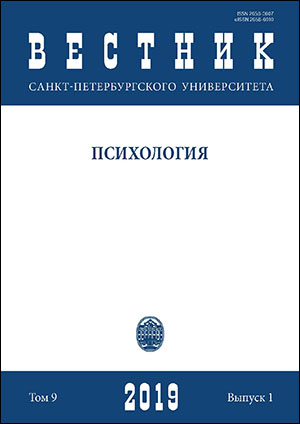The effect of the target’s subjective complexity on the picture-word interference
DOI:
https://doi.org/10.21638/11701/spbu16.2019.107Abstract
Picture-word interference (PWI) paradigm is widely used in cognitive science for studying selective attention and speech production. This experimental paradigm is a modification of the classical Stroop task. In PWI task participants perform speeded naming of pictures (targets) while ignoring superimposed word distractors. Pictures are usually named more quickly when the distractor is a word than a control stimulus — the interference effect is observed. The effect size depends on many factors including the target’s subjective complexity. Leading theories of Stroop interference give mutually exclusive predictions concerning the influence of this factor on the magnitude of interference. According to the theories of competition, which consider the interference effect as a consequence of automatic processes, the complication of target images should lead to an increase in interference. The opposite prediction follows from the framework of control theories, which consider Stroop interference as a consequence of voluntary attention processes. The aim of this study is to identify the orientation of the target’s subjective complexity effect on picture-word interference. The subjective complexity of the target images was varied in two ways: (1) by using unfamiliar targets and (2) by targets fragmentation. In both experiments, the identical results were obtained. Increase in the target’s subjective complexity, no matter how it was varied, led to the decrease of picture-word interference. The obtained results provide evidence for the control theories, which include the conceptions of D. Kahneman and V. M. Allakhverdov
Keywords:
Stroop interference, Stroop task, picture-word interference task, target’s subjective complexity, target familiarity, target fragmentation
Downloads
References
References
Downloads
Published
How to Cite
Issue
Section
License
Articles of "Vestnik of Saint Petersburg University. Psychology" are open access distributed under the terms of the License Agreement with Saint Petersburg State University, which permits to the authors unrestricted distribution and self-archiving free of charge.




